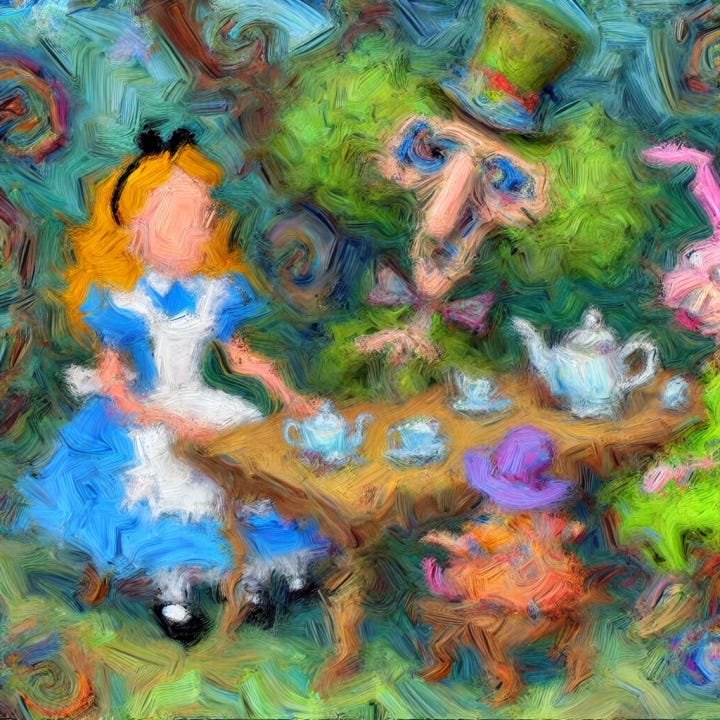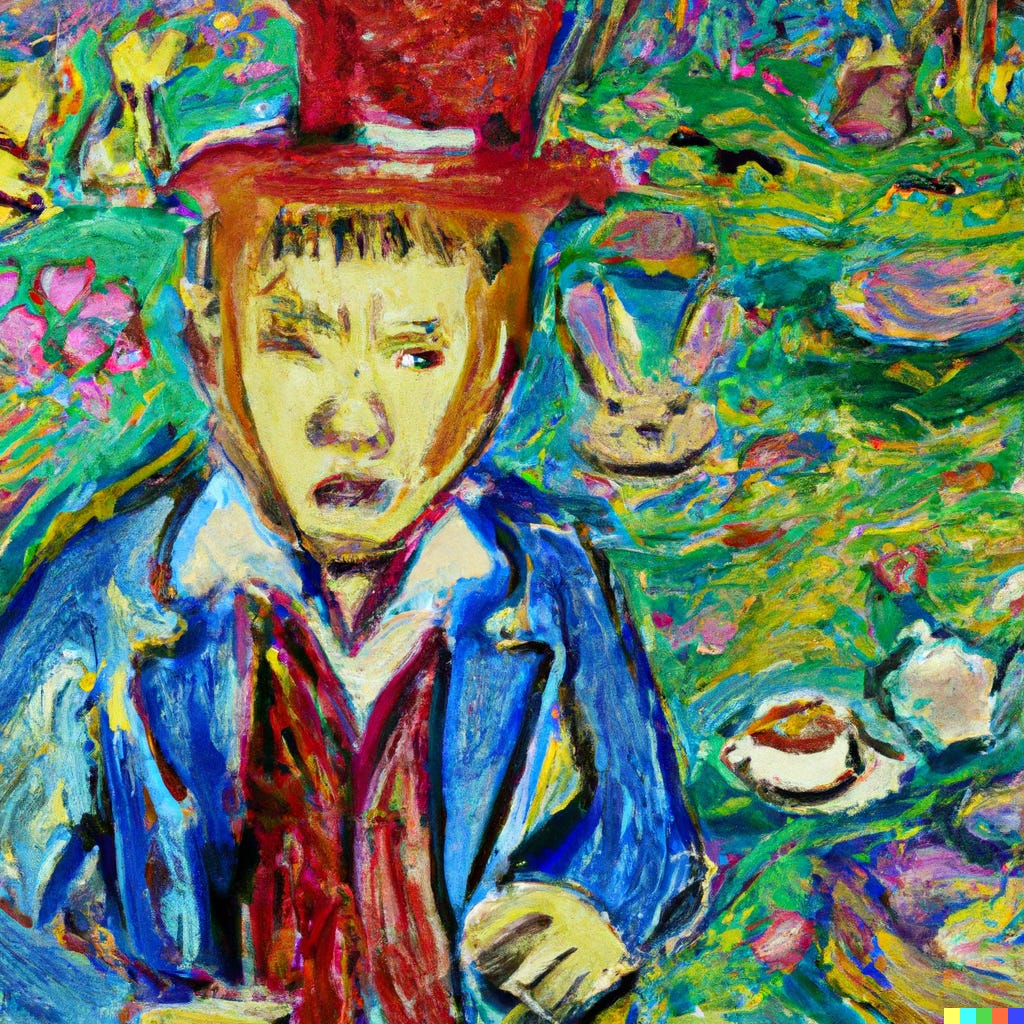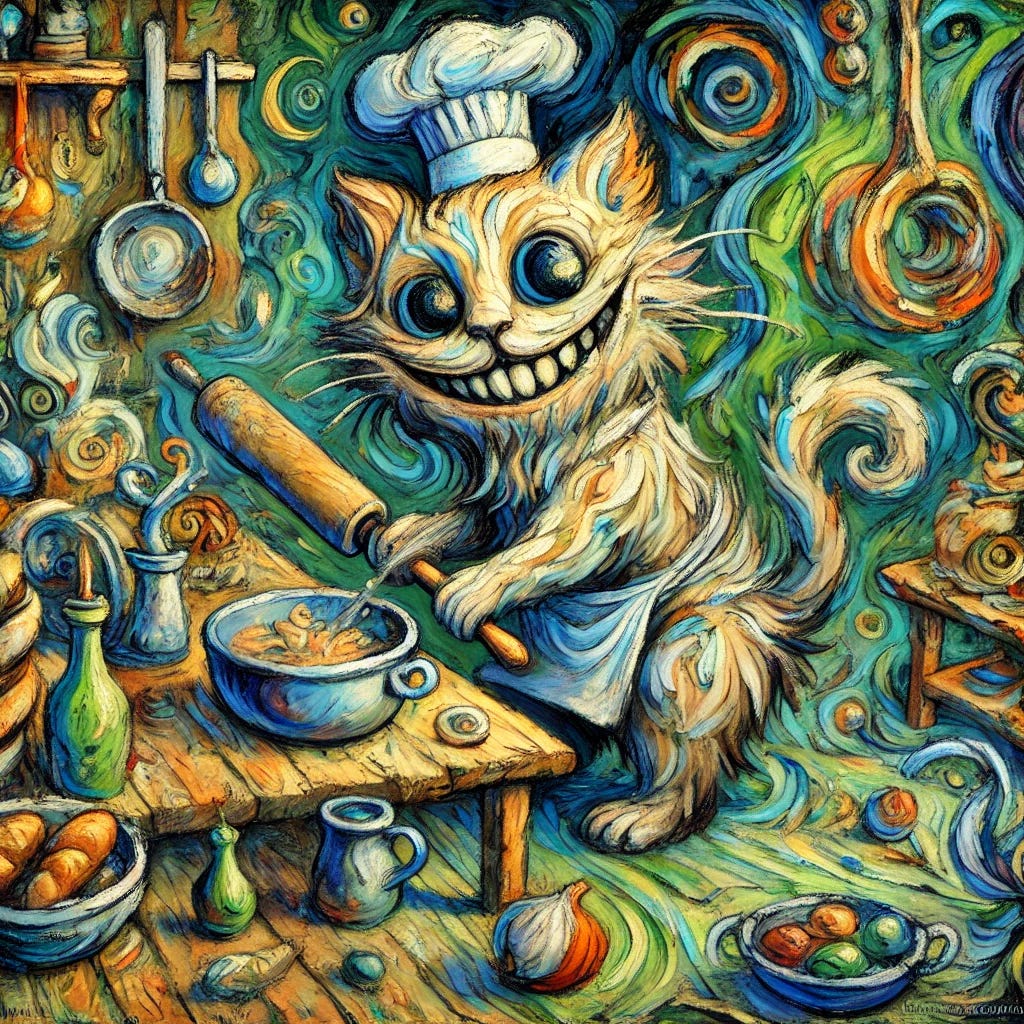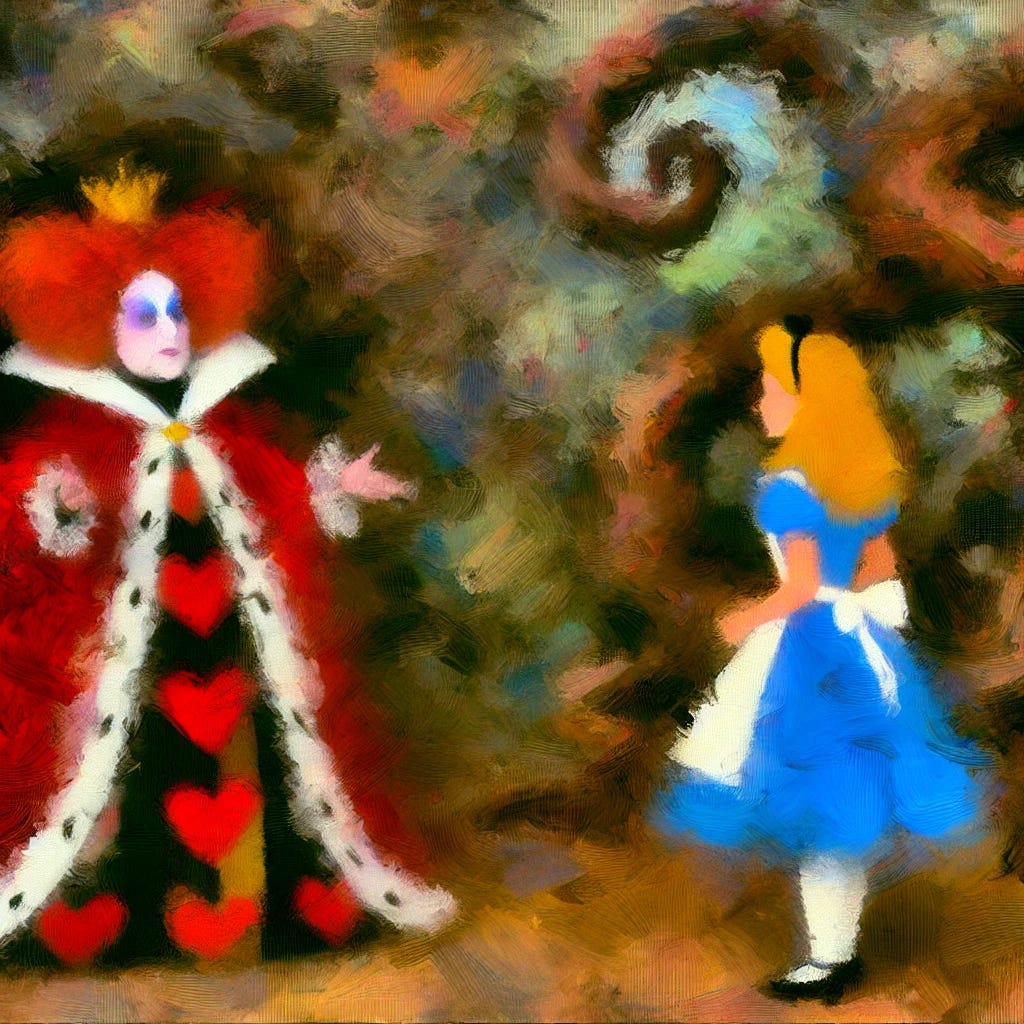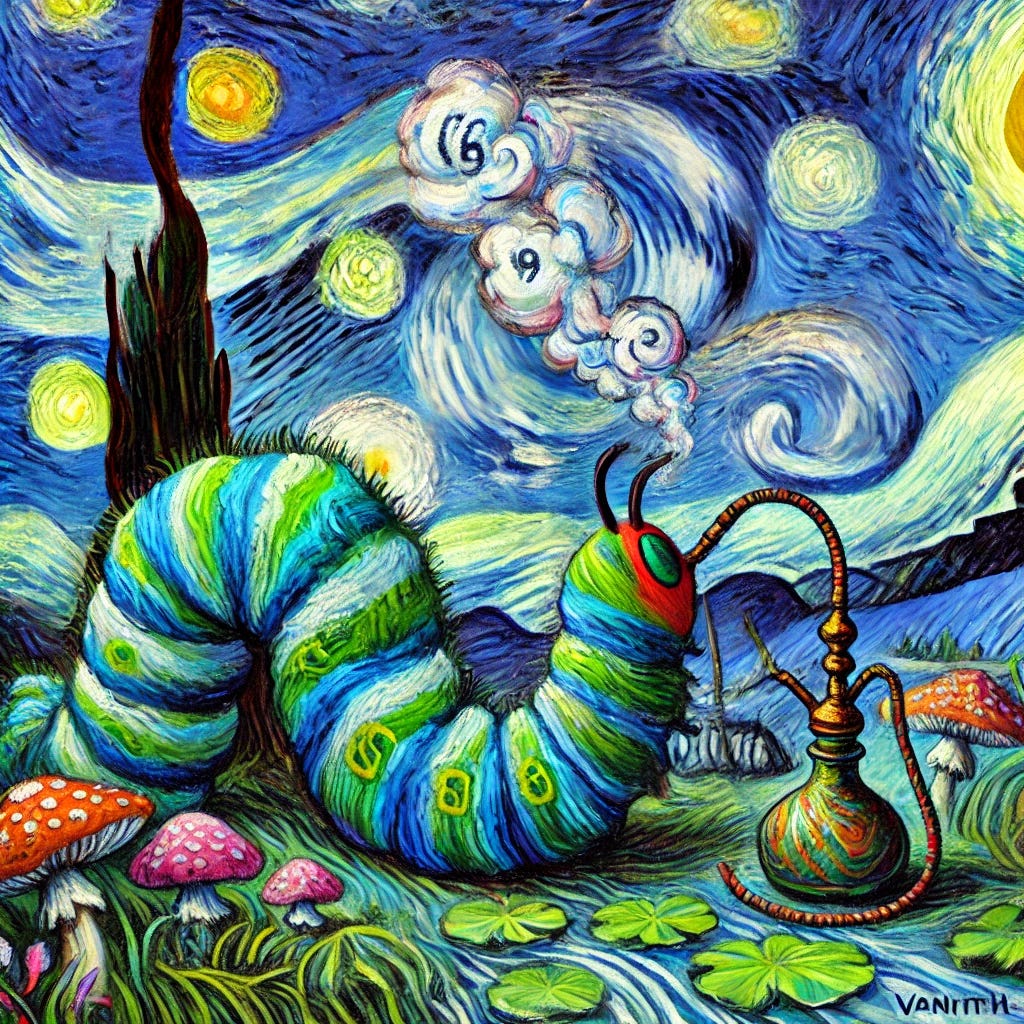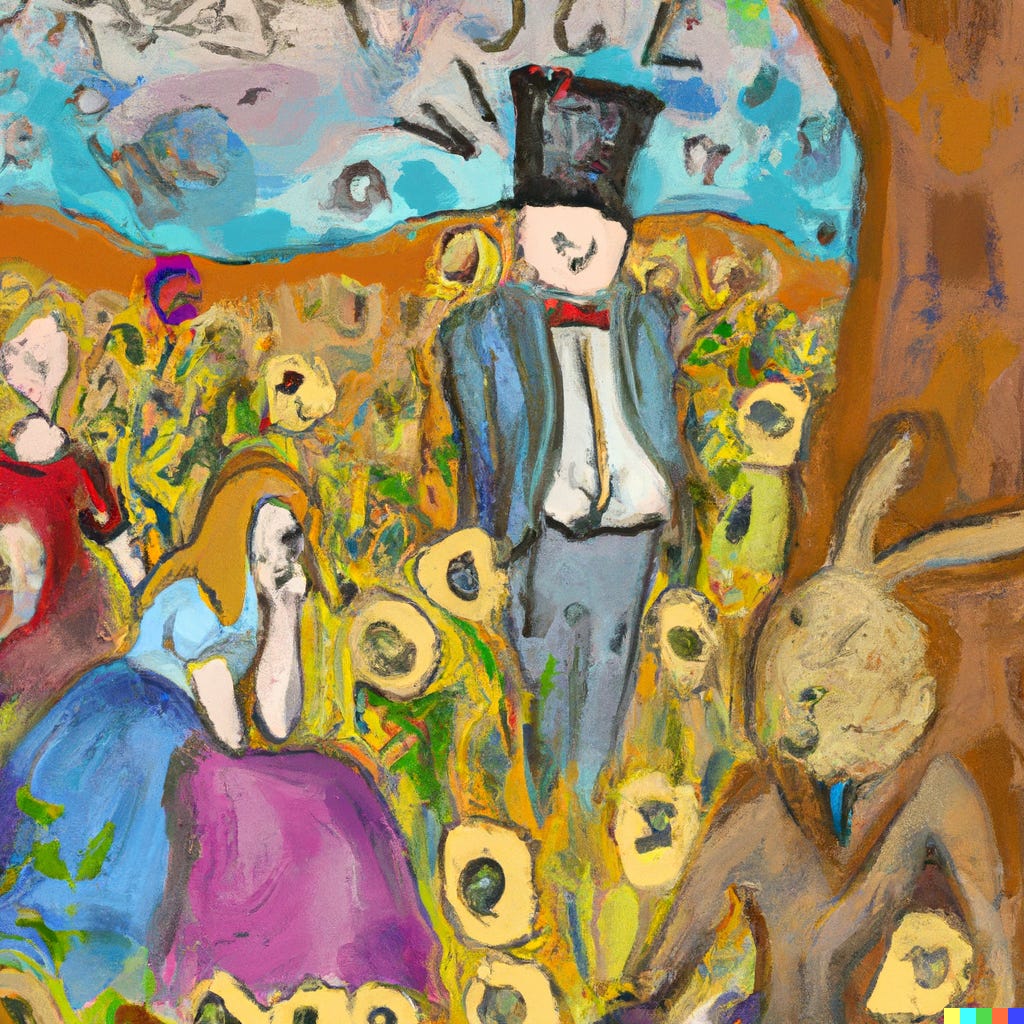Alice In Productland
A Curious Journey Through Product Management
Once upon a time, in a world not so far from ours, Alice found herself wandering through a peculiar landscape. This was no ordinary place; it was a realm that blended the enchanting chaos of Wonderland with the intricate world of Product Management. Here, user stories were as common as white rabbits, and roadmaps were as winding as the rabbit hole. She had ventured into a place where ideas were born, nurtured, and sometimes, tragically abandoned.
As she wandered aimlessly through a strange and unfamiliar world, Alice stumbled upon a curious sight: a tea party hosted by none other than the Mad Hatter. A product leader of legendary proportions. His table was a chaotic masterpiece of sticky notes, wireframes, and half-eaten pastries.
The Hatter was a whirlwind of ideas, each more outlandish than the last. He seemed to be leading his team without any clear direction or structure. Alice was curious, and she couldn't resist asking the Hatter about his strategy...
"Strategy?" the Hatter replied, "Who needs strategy when we have so many ideas brewing and know how to tell good stories?" as he scribbled down a feature no one had ever conceived.
Alice watched in awe as the Hatter's team brought these seemingly mad ideas to life. It was a chaotic, yet exhilarating process, filled with equal parts genius and madness.
In her experience, a product team needed a clear strategy and structure in order to succeed. But the Mad Hatter seemed to be leading his team down a different path, one filled with endless possibilities and unbridled creativity. She began to see value in this approach and thought to herself, "perhaps creativity and madness are the ultimate currency of this land."
Next, Alice stumbled upon a grand product kitchen run by the Cheshire Cat. The Cat, with his enigmatic grin, presided over a bustling team of chefs. Each chef specialized in a different product, creating a symphony of features and requirements that delighted every experience.
“Welcome, Alice,” purred the Cheshire Cat. “Here, product management is like a Michelin-starred kitchen. Each team member has a specific role, contributing their expertise to craft a masterpiece."
Alice, intrigued, watched as the chefs worked in harmony. The Cat explained, “Just like a kitchen needs precise roles and coordination, so does a product team. But, much like a kitchen, a product team must be agile and adaptable. We pivot, we adjust, we innovate based on feedback from the creatures who eat our food and the changing trends in our world.”
The Cheshire Cat, who seemed to have an uncanny ability to keep the team focused and on track, had a very different approach from the Mad Hatter. Alice marveled at this perspective. But she still had one burning question: "How does the Mad Hatter's approach fit into all of this?"
The Cheshire Cat chuckled. "Ah, the Mad Hatter," he said. "He's like a chef who throws all kinds of ingredients into a pot, stirs them around, and somehow creates a masterpiece."
The product management world was indeed as varied as Wonderland itself. The Hatter’s chaotic creativity and the Cat’s structured kitchen approach were just different slices of a larger, more complex pie.
But the world of product was not all tea parties and well-run kitchens. There was also the Queen of Hearts, the embodiment of the most demanding stakeholders. Her reign was marked by constant changes, impossible deadlines, and a penchant for beheadings (metaphorical, of course). She was busily commanding her card soldiers. “Everything I ask for must be done and it must be done my way!” the Queen declared with a booming voice.
Alice, recalling her experiences, addressed the Queen, “Managing stakeholders in product management often feels like dealing with you, Your Majesty. It’s essential to align everyone’s expectations and vision to avoid chaos.”
The Queen’s temper flared momentarily, but Alice’s point was well taken. The Queen’s demands reflected the challenge of balancing conflicting stakeholder interests and driving towards a unified product vision. Alice quickly learned the art of diplomacy, juggling the desires of the Queen with the realities of her development.
Continuing her journey, Alice came across a Caterpillar, a wise old creature who smoked a hookah and dispensed sage advice. He asked her the famous question, "Who are you?"
Alice replied, "I'm a product manager, I think. I'm trying to navigate this strange world."
The Caterpillar responded, "Ah, a product manager. You must be very good at managing expectations and driving outcomes."
"As a product manager, you need to be constantly collecting and analyzing data to make informed decisions," he told her, "just like I use my hookah smoke to see patterns in the air."
She looked up, and upon closer inspection, realized the smoke floating above was not simply smoke, but it also created patterns that told stories. The Caterpillar taught Alice the importance of data-informed decision making, of looking beyond the surface to uncover hidden patterns.
As Alice delved deeper into this world, she encountered a variety of peculiar characters: the Dodo, a project manager obsessed with timelines; the King of Hearts, a frantic scrum master always counting down to the next sprint; and the Tweedledee and Tweedledum, a pair of designers with opposing views on every design decision.
She learned that product management was a delicate balancing act, a world of constant negotiation.
Alice's journey wasn't without its challenges. She encountered product teams that were stuck in a rut, following outdated methodologies and resisting change. She witnessed the downfall of products due to a lack of creature-focus and the rise of those that were built on a deep understanding of creature-needs and first principals thinking.
As she spent more time here, Alice began to realize that successful product managers should embrace the chaos, the uncertainty, and the constant change that defined this world. Those are the ones that can see the big picture while also paying attention to the smallest details. Ones who might blend the art and science of wonderful development.
They are visionaries who could inspire their teams to cook the best features, analysts who could make sense of complex data-clouds, and diplomats who could navigate the political landscape of conversations with the Queen (of Hearts).
And so, with her newfound insight, Alice now tackles challenges with her strategic mind, incorporating the creativity of the Mad Hatter, agility of the Cheshire Cat, and the diplomacy she built with the Queen of Hearts, upon all the other things she learned from the creatures she encountered.
She knows she is in a world as enchanting and perplexing as any fairytale. As as she looks back on her past adventures, she seems certain that she has found her true calling: to be a product manager, a master of the chaos and a weaver of digital magic, adding the wonder to Wonderland.



